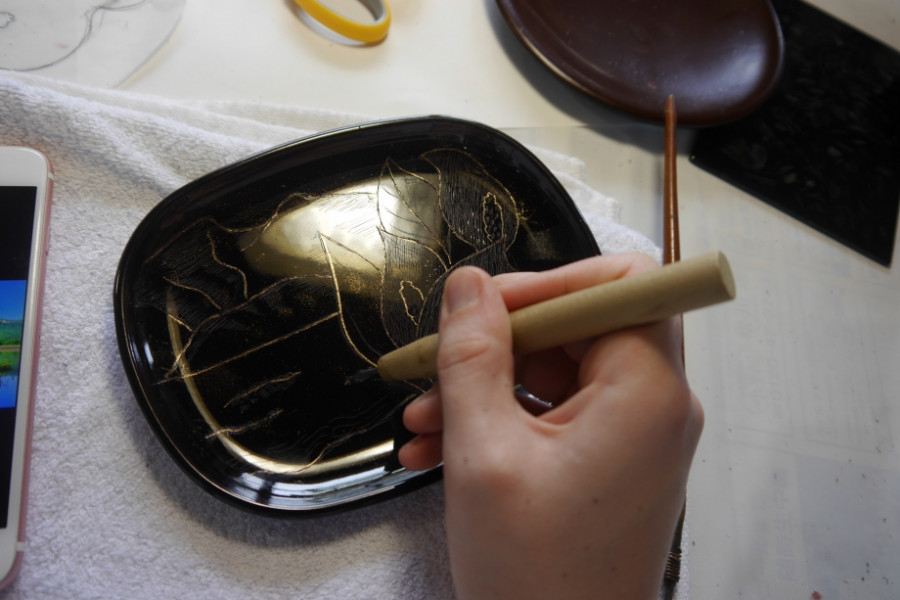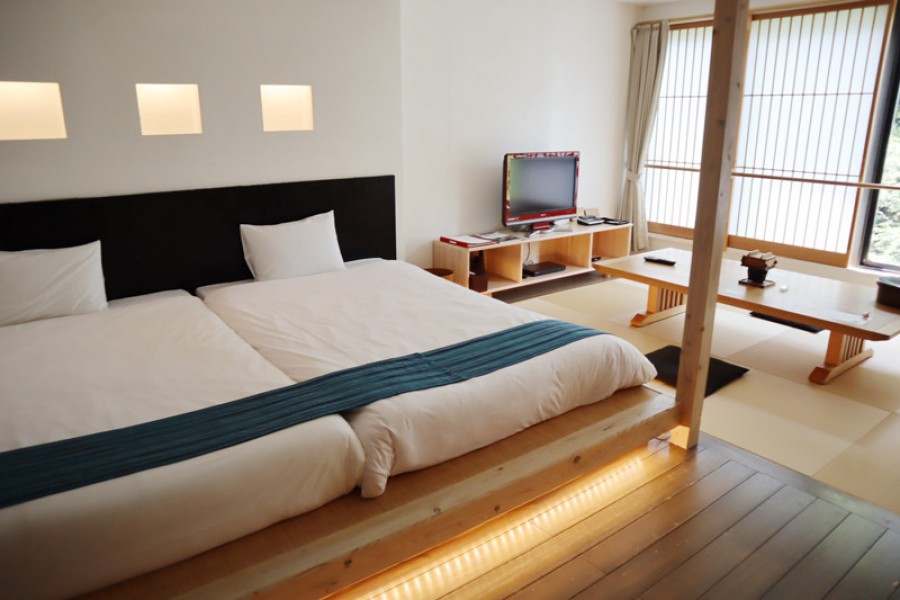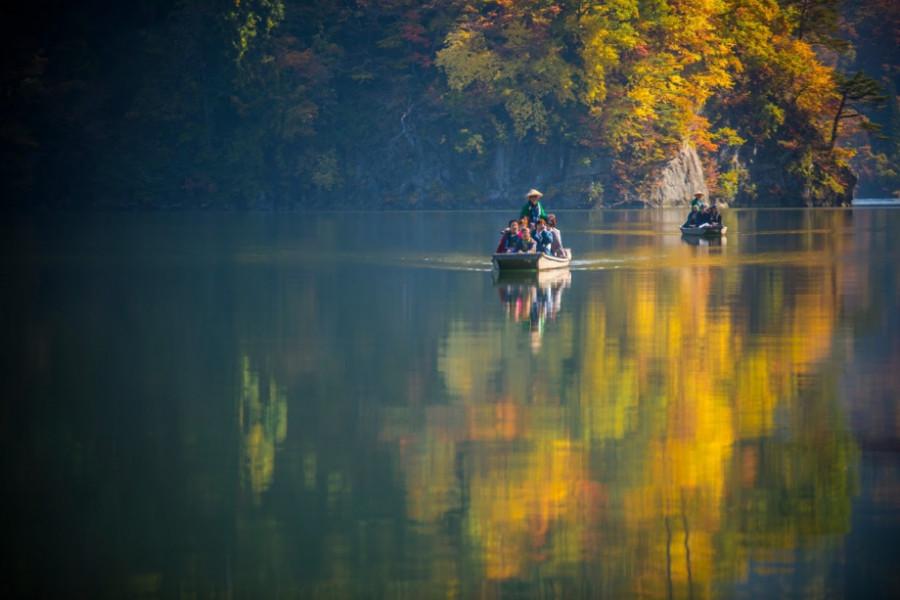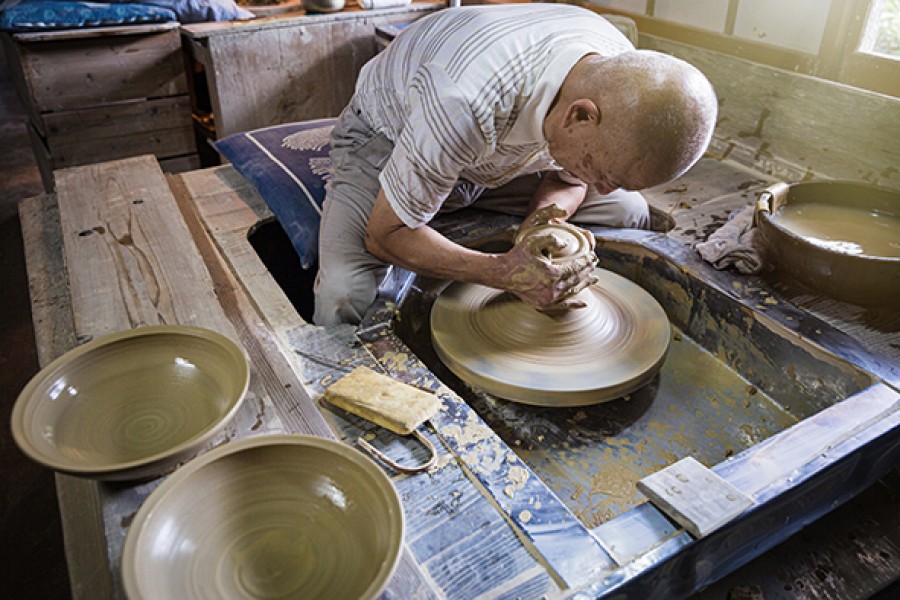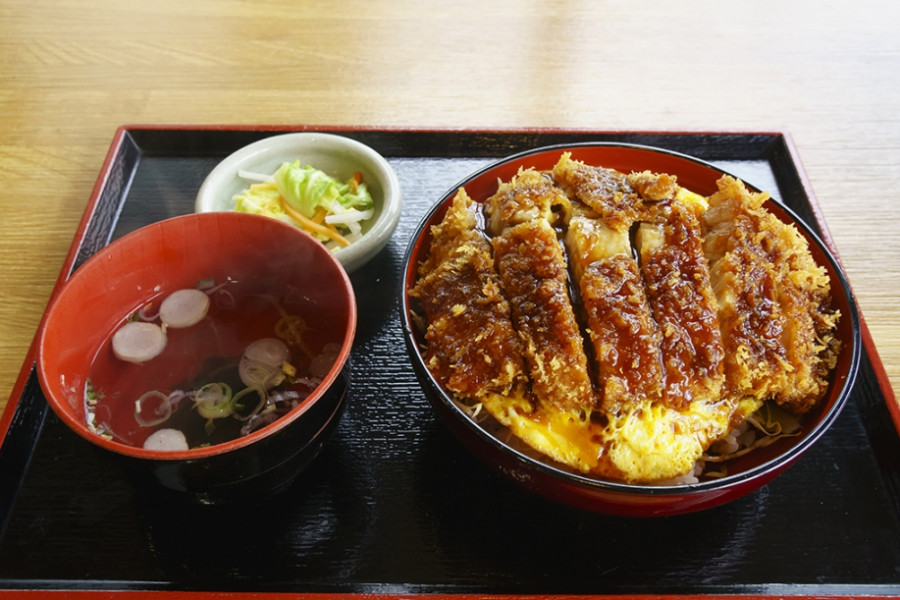Ryokan
Ryokan Kashiwaya
Nestled in the tranquil mountains of Fukushima, Futamata Onsen Kashiwaya Ryokan is a serene onsen retreat known for its five distinct natural hot springs. Each bath is supplied with fresh, pure spring water directly from the source, providing guests with an exceptional onsen experience. The high-quality water, sourced directly from the earth, ensures a truly rejuvenating soak.One of the standout features of Kashiwaya Ryokan is its self-flowing stone bath, a rare sight even in Japan. This bath is fed directly from the spring beneath the floor, with fresh, untouched water emerging naturally from the ground. Guests can experience the soothing sensation of bathing in mineral-rich hot spring water, with fresh "yu-dama" (bubbles of water) rising from the bottom of the tub, offering an authentic and refreshing onsen experience.The culinary experience at Kashiwaya is deeply rooted in the local culture, with the ryokan using only the freshest local ingredients prepared with traditional regional seasonings and cooking methods. Guests can enjoy dishes featuring Fukushima Beef, known for its tender texture and marbling, as well as basashi (horse sashimi), a popular local delicacy. Every meal reflects the essence of the region's flavors, offering a true taste of Fukushima.Beyond the relaxing onsen, there are plenty of opportunities to explore the natural beauty of the Aizu region. Guests can join guided nature walks led by local experts to discover the area's diverse flora and fauna. Depending on the season, various outdoor activities are also available nearby, allowing guests to fully immerse themselves in the scenic surroundings.Futamata Onsen Kashiwaya Ryokan offers a perfect blend of relaxation, regional flavors, and outdoor exploration, making it an ideal destination for those looking to experience the warmth of the onsen and the beauty of the Aizu region.
